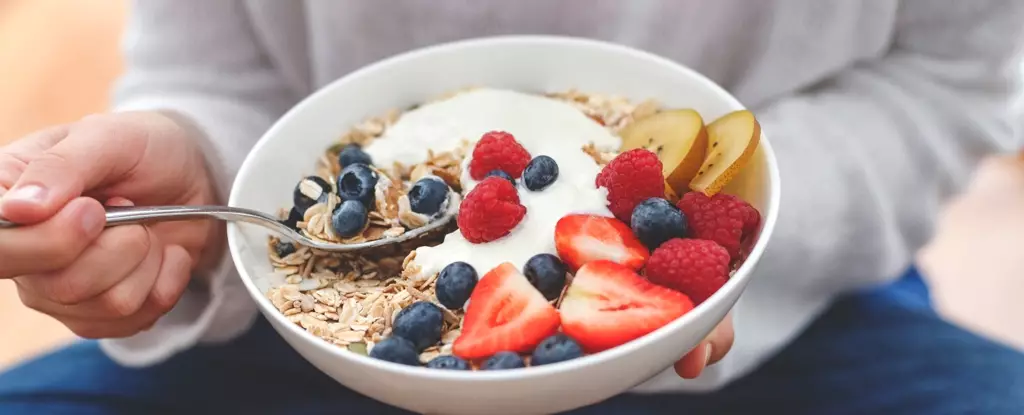The advent of microbiome research has catalyzed a significant paradigm shift in nutritional science, unveiling intriguing insights into the symbiotic relationship between dietary choices and microbial health. Among the various components of our diets, dietary fiber has emerged as a star player, often touted as the “new protein.” This excitement has led to its widespread addition in food products, aimed at nourishing the gut microbiome and enhancing overall health. However, recent studies suggest that not all fibers are created equal, thus calling for a more discerning approach to fiber consumption.
An illuminating study conducted by researchers from the University of Arizona and the University of Vienna emphasizes the nuanced effects of various fiber types. The focus of their research was beta-glucan, a dietary fiber prevalent in oats and barley. Their findings challenge the existing narrative that any fiber is beneficial, highlighting that beta-glucan specifically stands out in its ability to manage blood sugar levels and promote weight loss in mice subjected to a high-fat diet.
The Distinction of Beta-Glucan: Nature’s Weight Management Strategy
In the study, the complexities of different fiber types became evident, as beta-glucan was the only fiber supplement that demonstrated a significant reduction in body weight and fat content over an 18-week period. In stark contrast, other fibers such as wheat dextrin, pectin, resistant starch, and cellulose failed to yield similar outcomes, even though they altered the microbiome’s composition. Biomedical scientist Frank Duca from UA effectively articulates the necessity of understanding which types of fiber can genuinely contribute to weight loss and improved glucose regulation, as this knowledge is invaluable for consumers, healthcare professionals, and the agricultural sector.
The implications of this research extend beyond mere academic interest; they present a potential roadmap for tackling growing health concerns linked to obesity and diabetes. Despite the recognized benefits of fiber—evident in its role as the primary energy source for gut bacteria—statistics reveal a troubling reality: most Americans fall drastically short of the recommended daily intake of 25–30 grams. This deficit has led to a surge in fiber supplements and “invisible fiber” in various food products, yet consumers remain largely uninformed about the types of fiber they are incorporating into their diets.
Understanding Fiber Diversity: The Key to Optimal Health
Fiber diversity is a crucial factor that should guide consumer choices. Fibers can be broadly categorized into water-soluble and insoluble types. Water-soluble fibers, like oat beta-glucans, are readily fermented by gut bacteria, while insoluble fibers, such as cellulose, might provide bulk to stools but lack the same fermentative properties. The findings from the UA study suggest that beta-glucan’s specific interaction with gut bacteria, particularly its ability to enhance the presence of Ileibacterium—associated with weight loss—marks it as a dietary standout.
Interestingly, the study noted that the mice receiving beta-glucan exhibited heightened energy expenditure despite maintaining a consistent high-fat diet, leading to weight loss—an observation echoed in prior experiments involving barley flour. This phenomenon raises intriguing questions about the potential mechanisms through which beta-glucan operates, particularly its effect on metabolic processes and gut health.
The Role of Butyrate: A Hidden Hero in Dietary Fiber
Delving deeper into the physiological response elicited by dietary fiber, an important metabolite, butyrate, emerges as a key player. Formed when fiber is fermented by gut bacteria, butyrate is crucial for various health outcomes, including promoting gut barrier integrity and regulating appetite. The researchers found that beta-glucan intake significantly increased butyrate levels in the mice, suggesting a robust interplay between fiber consumption and gut health.
Butyrate is particularly noteworthy because it stimulates the release of glucagon-like peptide-1 (GLP-1), a hormone that has garnered attention for its role in appetite control and insulin signaling. Given the rising prominence of synthetic drugs mimicking GLP-1 to combat obesity and diabetes, understanding how natural dietary components can facilitate similar effects is an avenue ripe for exploration.
The burgeoning body of research into dietary fibers reveals a complex terrain that warrants careful navigation. While dietary fiber is undisputedly a cornerstone of a healthy diet, the diversity among types means not all are equally effective. As consumers become increasingly aware of their dietary choices, insights from studies like those conducted by UA and the University of Vienna will be instrumental in guiding healthier eating habits and potentially addressing chronic health conditions. Such revelations showcase the importance of tailored nutritional approaches and the potential of fiber to influence health outcomes significantly—especially when consumers prioritize the right types.


Leave a Reply